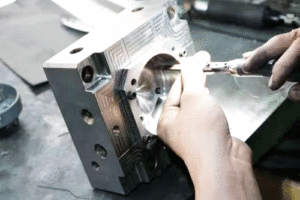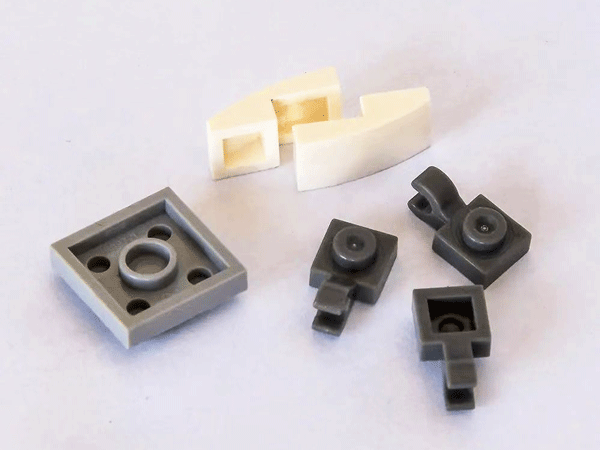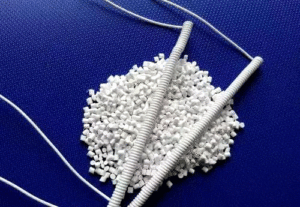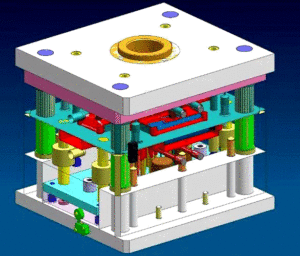
Polishing Treatment for Plastic Molds
Polishing Treatment for Plastic Molds With the widespread application of plastic products, such as daily-use items and beverage packaging containers, there is often a requirement
The proportion of plastic materials in life is getting higher and higher, as well as the requirements for its quality. Injection molding is an important means for the production of plastic products, and the requirements for technological improvement are becoming more and more urgent.
There are many factors affecting injection molding products, but the processing condition is one of the important factors. Next, we will introduce the various process parameters affecting plastic molding from three aspects: temperature, pressure, speed and time.
It should be greater than the flow temperature of the plastic (melting point), and less than the decomposition temperature of the plastic.
1.1.1 The result of high barrel temperature:
1.1.2 The result of the barrel temperature being too low:
1.2.1 The temperature is too high – the plastic is prone to decomposition reaction, etc.
1.2.2 The temperature is too low – the nozzle is easy to be blocked, and it is easy to produce cold blocks or rigid blocks, etc.
The actual flow of the melt in the mold cavity is non-isothermal flow. That is, the temperature of each part of the mold cavity is uneven.
1.3.1 High mold temperature – slow cooling, easy to produce mold sticking, plastic parts are easily deformed when demoulding, etc.
1.3.2 Results of low mold temperature:
It is easy to decompose; it is easy to generate internal stress; the surface viscosity of the melt decreases with good the fluidity. This is especially true for temperature-sensitive plastics. It is easy to fill the mold, and it is easy to overflow and overflow.
It is easy to generate internal stress. For example, in the actual mold cavity, the temperature of each point is uneven, and the flow of the melt is non-warm flow.
It is not easy to decompose; the surface viscosity is high, the fluidity is poor, the mold filling is difficult, and it is easy to produce insufficient molding, weld lines, cold blocks or rigid blocks, etc.
It must be enough, otherwise there will be overflow, burr, etc.
2.2.1 Results of overly high injection pressure:
When it is too high, the plastic is forced to condense under high pressure. And it is easy to generate internal stress, which is conducive to improving the fluidity of the plastic. Besides, it is easy to produce overflow. And the residual pressure on the mold cavity is large, the plastic is easy to stick to the mold. It is also difficult to demold, causing the plastic parts deform but with no bubbles generated.
2.2.2 Results of overly low injection pressure:
When it is too low, the fluidity of the plastic decreases, resulting in insufficient molding and weld lines. It is not conducive to the overflow of gas from it, making it easy to generate air bubbles. Then, the plastic fills shrinkage gaps during cooling, resulting in dents and ripples, etc.

2.3.1 Too high – easy to produce overflow, increase internal stress, etc.
2.3.2 Too low – insufficient molding, etc.
2.4.1 Too high – The plasticizing time becomes longer. The melt is easily decomposed. And bubbles, streaks, black spots and so on are generated.
2.4.2 Too low – the temperature of the gas in the melt at the front end of the barrel increases under pressure. And the local heat of the melt is too high, which decomposes to produce black spots and bubbles.
3.1.1 Too long – the mold temperature is too low, and the molten material stays in the barrel for too long.
3.1.2 Too short – the mold temperature will increase relatively.
The injection time is shortened, the filling speed is increased, and the orientation is decreased.
As the shear rate increases, the surface viscosity of most plastics decreases, especially for shear rate sensitive plastics.
When the shear rate is too large, melt fracture occurs. The shear rate increases and the orientation increases.
3.3.1 Short – the plastic parts are not close together, easily generating dents and making the dimensions of the plastic parts unstable.
3.3.2 Long – increase the internal stress of the plastic parts, resulting in deformation, cracking, and difficulty in demoulding.
3.4.1 Long – difficult to demold, easy to deform, high crystallinity.
3.4.2 Short – easy to produce deformation, insufficient cooling, etc.
3.5.1 Fast – increased shearing heat, short plasticizing time, etc.
3.5.2 Slow – the shear heat decreases, the plasticization time increases, etc.
If the mold opening speed is fast, the molding cycle will be short. But if it is too fast, it is easy to increase the friction between the surface of the plastic part and the cavity, resulting in scratches.
If the ejection speed is too large, the plastic parts are easily deformed.
In order to maintain the production level and quality of plastic products, manufacturers must bear these injection molding process parameters in mind. So that you can avoid the setting mistakes in your production and produce the high quality plastic products.

Polishing Treatment for Plastic Molds With the widespread application of plastic products, such as daily-use items and beverage packaging containers, there is often a requirement

Injection Molding Techniques for TPE and TPR Injection Molding Techniques for TPE and TPR 1. Dry the TPE and TPR material before injection molding It

Winter Maintenance Measures for Injection Molding Machines As winter approaches and temperatures gradually drop, a cold chill envelops the earth. While ensuring personal warmth, it

Assessment Regulations for Mold Trial Exceeding 3 Times Assessment Regulations for Mold Trial 1. Purpose The purpose of this regulation is to standardize the work of